December 2023
For 10 years, NOAA’s Office of National Marine Sanctuaries has recognized outstanding achievement by presenting the Sea to Shining Sea Award for Excellence in Interpretation and Education. The award recognizes success in advancing ocean and climate literacy and conservation through national marine sanctuaries. It also recognizes innovation and creative solutions to raising public awareness and appreciation of the National Marine Sanctuary System.
This year, the award is presented to Lindsey Crews and Emily Kovacs: Raising the Interpretive Bar at the Florida Keys Eco-Discovery Center.
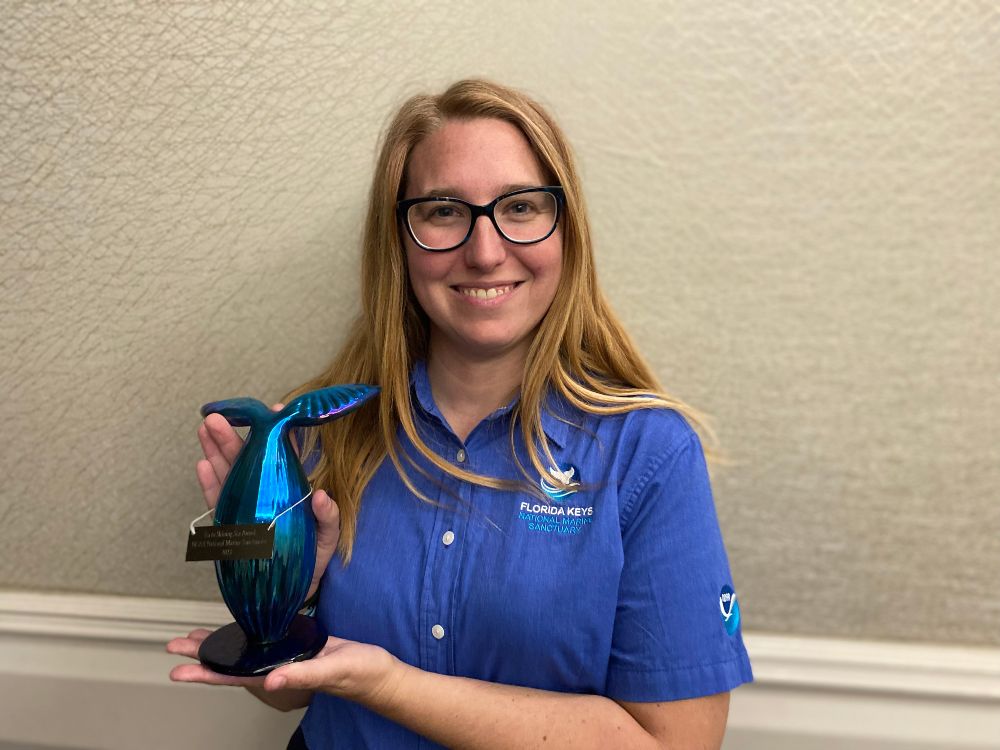
“If you can’t get out on the water, stopping by a visitor center is a great way to explore your sanctuary.”
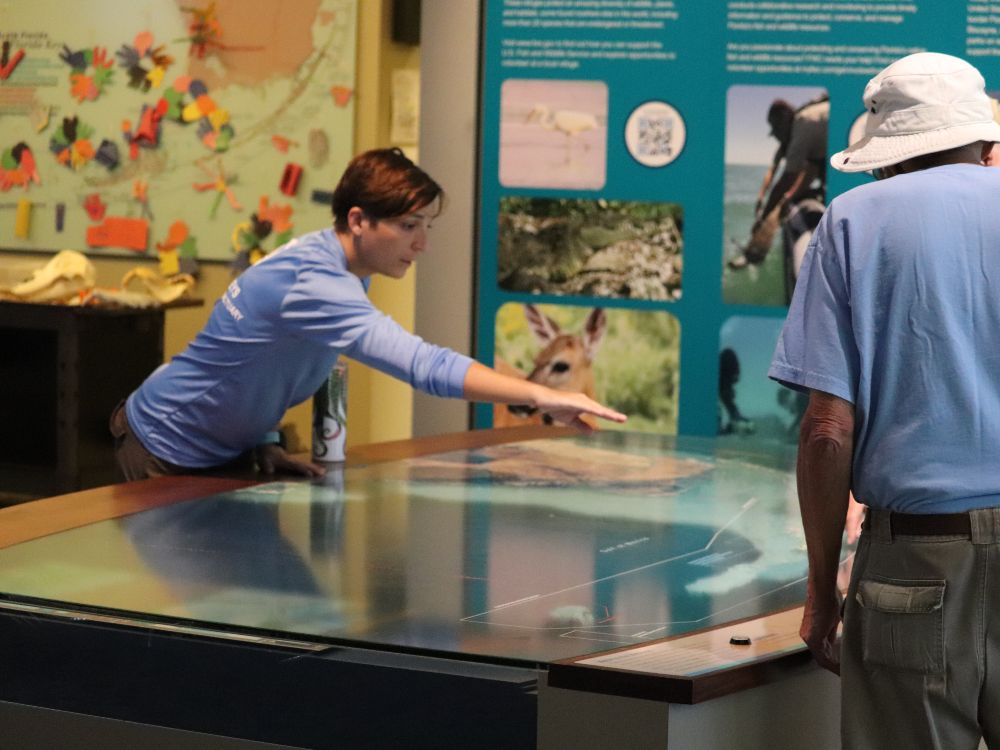
Visitor centers and interactive exhibits are some of the most effective ways to teach the public about the National Marine Sanctuary System.
Florida Keys Eco-Discovery Makeover
Since 2007, the Florida Keys Eco-Discovery Center has been a central place for locals and tourists to learn about natural and cultural resources in Florida Keys National Marine Sanctuary, reaching over 70,000 people every year. Visitors learn about the importance of the National Marine Sanctuary System and how they can spread awareness about important environmental issues in their own communities. The exhibits teach climate change communication, sustainable tourism, ecosystem connectivity, and more.
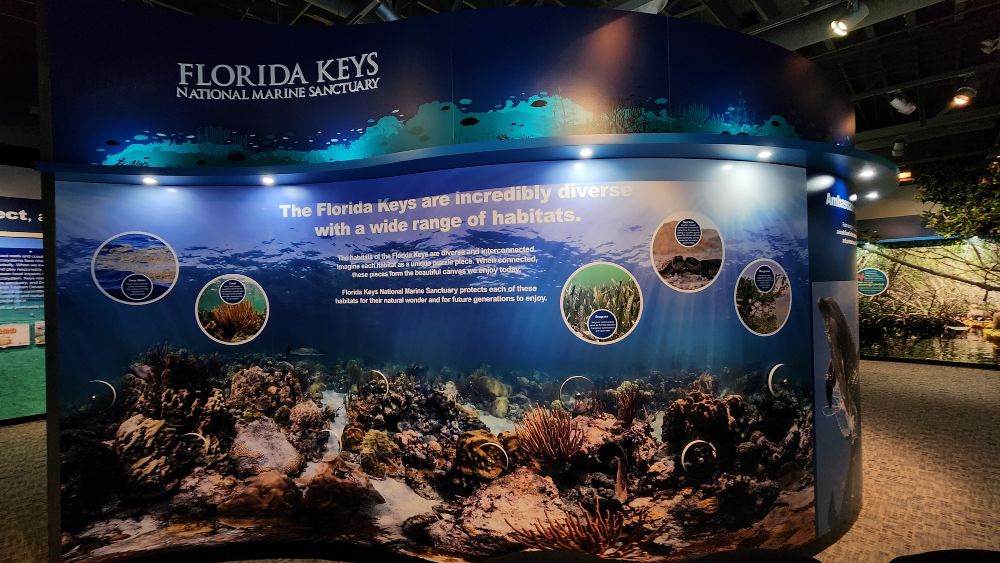
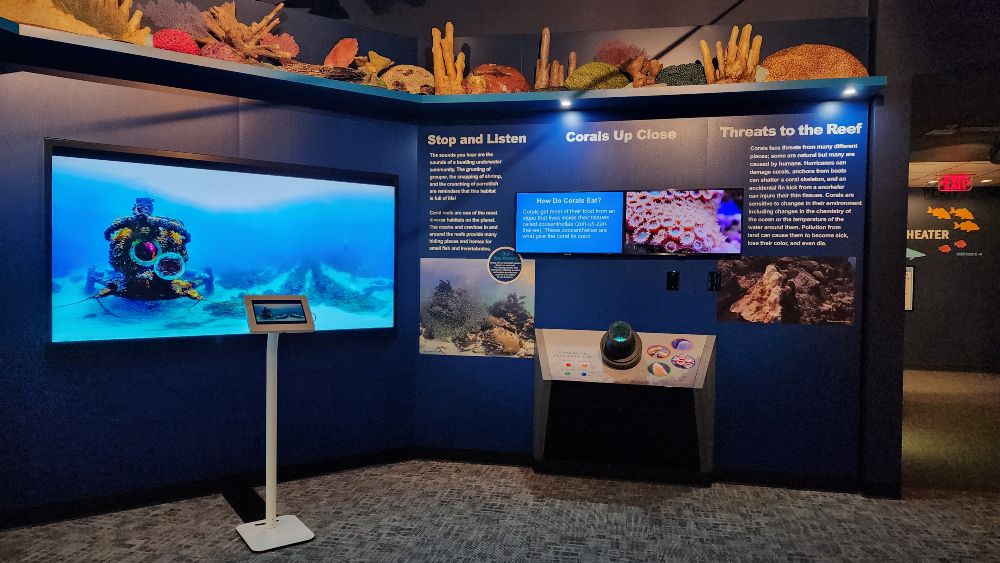
In 2018, the center started a redesign process to improve interpretive messaging and modernize the exhibit space. The redesigned center features interactive and accessible exhibits that engage all ages, abilities, and types of learners, helping them to understand ocean and climate literacy concepts and connect with national marine sanctuaries. Innovations at the center included all exhibits featuring a “call to action,” exhibit text and audio tours translated into numerous languages, and interpretive, interactive designs throughout the over 6,000 square feet of exhibits.
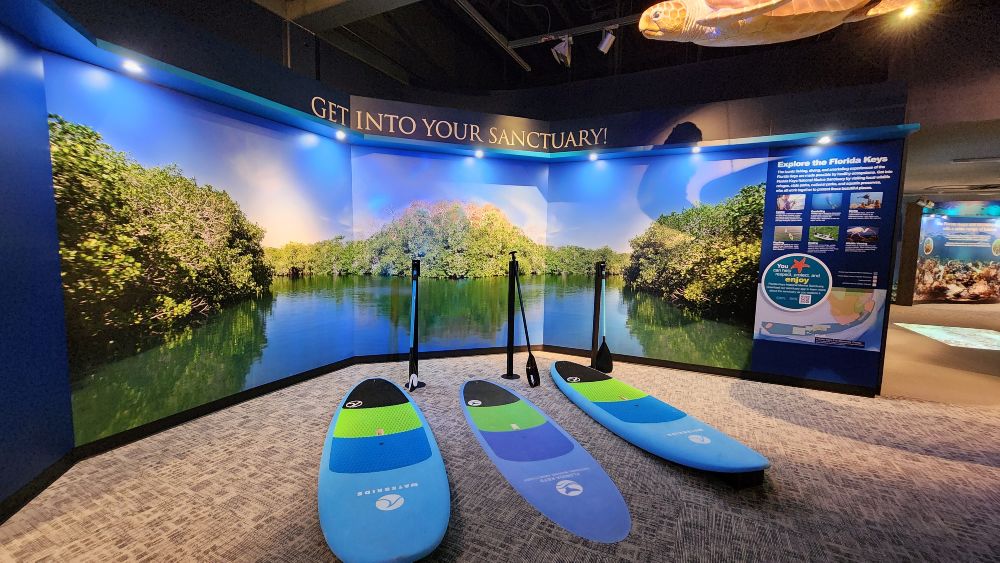
A truly remarkable aspect of the Eco-Discovery Center is that it is the first National Marine Sanctuary System visitor center to be certified “sensory inclusive” by KultureCity. “This certification demonstrates our commitment to being welcoming and inclusive to individuals with sensory needs,” said Crews.
Working With Partners
Kovacs and Crews also collaborated with multiple partners, including National Park Service, Florida Department of Environmental Protection, Florida Fish and Wildlife Service, NOAA Weather Service, and Mote Marine Lab. It is because of Kovacs and Crews’ outreach and ability to tap into knowledge within their professional networks, that the exhibits are able to be engaging and educational for all visitors.
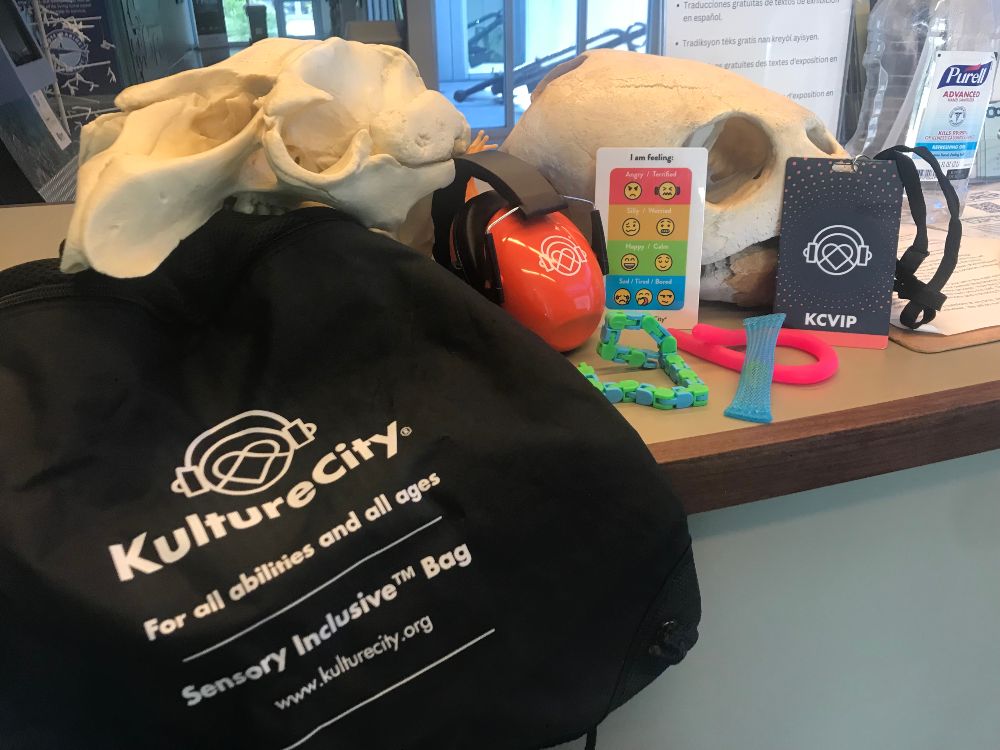
Congratulations to Lindsey Crews and Emily Kovacs for their commitment to hard work in increasing the public’s accessibility to National Marine Sanctuary System education, and dedication to their local national marine sanctuary community.
Visit a National Marine Sanctuary!
Florida Keys Eco-Discovery Center is one of the many National Marine Sanctuary System visitor centers around the country. Learn about the protected natural and cultural treasures, how and when to see wildlife, recreational opportunities, sanctuary activities and events, and much more in any visitor center. Explore hands-on exhibits, attend an educational and engaging program, and investigate the science and history of these special places! Sanctuary visitor centers are committed to being open, inclusive, and welcoming to all visitors.
Admission is free at all visitor centers.
Gigi DuFour is an intern with NOAA’s Office of National Marine Sanctuaries. Dayna McLaughlin is the national interpretation coordinator at NOAA’s Office of National Marine Sanctuaries.

